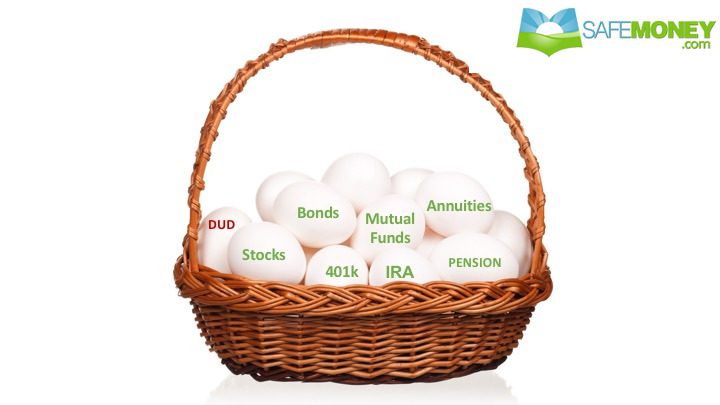Asset Allocation: The Linchpin for Your Retirement Withdrawal Rate

You’ve heard it before: the best laid plans of mice and men often go astray. Through all stages of our personal and financial lives, we know there will inevitably be twists and turns. The market goes up, the market goes down. But there are safer routes than others for our money. While there’s no foolproof Waze app for retirement savings and investment, there are directions we can take—and avoid!
First, Let’s Look at Your Withdrawal Rate.
Two key players in the viability of your financial plan for retirement are the size of your retirement nest egg and the pace at which you plan to spend it. This is your withdrawal rate. After putting in the time and consideration to determine the magic number for your retirement and your intended rate to spend it down, you may have reservations about your actual investment portfolio and whether it will perform as expected to sustain you over time.
Since no one can say how long you will live, our lens of The Rule of 100 helps add perspective to this all-important strategy of making sure your retirement income will last.
Asset Allocation Plan
When we look at the actual investment portfolio, we know that one factor which will have a big impact on your portfolio’s success or failure is your asset allocation plan, essentially your investment mix of stocks, bonds, and cash. It’s tricky – how conservative or aggressive should one be? If you are too conservative, you may heighten the risk of a shortfall. Conversely, if you are too aggressive, you run the risk of incurring a bigger loss than you could reasonably recoup over your in-retirement time horizon.
Like the magic number, there’s no one-size-fits-all asset-allocation framework for retirement portfolios. Your age, spending rate, and income-producing retirement assets (like pensions and Social Security), among other variables, all contribute to and influence the individual decisions made.

3 Smart Asset Allocation Decisions in Retirement
Here are a few ways to handle your portfolio and handle the conversations you have with your financial professionals about the right direction for it too.
1. Now Is Not the Time to Be Chasing Down the Next Hot Stock Pick in Your Retirement Account
Many retirees and pre-retirees are equity true believers and don’t see much of a role for anything but stocks, mutual funds, or other risky investments in their portfolios. This tends to happen to many baby boomers who had good runs with investing in the market over their investing careers. But now people’s circumstances, needs, and objectives are different. Retirement is a period of decumulation, not accumulation. Your primary focus needs to be on providing monthly income and covering retirement spending goals, not on financial growth, asset growth, and investment returns. If you’re thinking about getting your retirement account balance to a new high, you’re subjecting it to the possibility of losing money in a down market.
2. Don’t Confuse Your Risk Tolerance with Your Risk Capacity
It’s important to take your past investing behavior into account when determining your portfolio’s asset allocation.
Most in-retirement asset-allocation frameworks call for holding significant shares of the portfolio in cash and bonds to meet in-retirement living expenses in years when stock returns are poor. They also call for reducing equities in a retirement portfolio over time to reflect the fact that risk capacity shrinks with an individual’s time horizon.
If you’re not careful, you could potentially put your retirement lifestyle in jeopardy if too much money is in market-based investments. You may want to consider safe vehicles offering contractual guarantees, like annuities and life insurance, which can provide permanent lifetime income and safety from market downfalls.
3. Your Pay Money is not Your Play Money
Pay money is what you need to maintain your lifestyle in retirement, what you can’t afford to lose. Play money, on the other hand, is used to satisfy whims and follow potential money-making opportunities. The point is: separate your pay money from your play money. Keep your pay money in safe vehicles so you can convert it into income streams. That way you can spend with confidence after you leave the workplace or your business. Then, if you wish, you can gamble (a little) with your play money once your pay money is intact and secure. You’ll be glad you did later, as you will have the peace of mind knowing where your money will be coming from, month to month, to pay for your costs of living.
Need help with creating the right asset allocation strategy for your retirement financial and income goals? SafeMoney.com can assist you.
Use our Find a Licensed Advisor section to connect directly with an independent financial professional, and to request a personal strategy session to discuss your needs and goals. And should you have any questions or concerns, call 877.476.9723.








